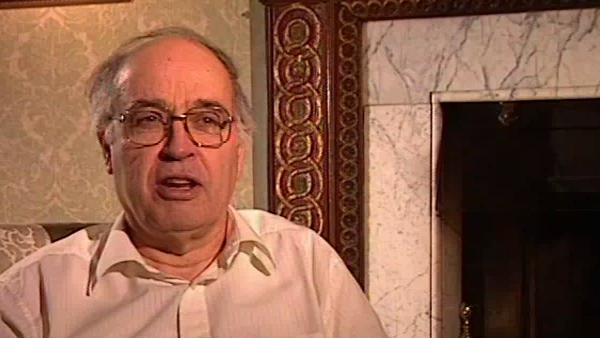Well I'd been interested in physics for quite a long time, sort of. For example when I first went to Oxford I... I did run a bit of a seminar about spinors and the... the Dirac equation. Having started on the Dirac equation I thought I should get interested in finding out what spinors were. It was all very preliminary, so, and I... I did talk at various times to other mathematicians like George Mackey who was very interested in quantum mechanics and its relation with group theory. And so I sort of picked up a bit of general background and I was interested in it, but I didn’t really… I wasn't seriously involved in the, sort of, you know, current latest ideas, quantum field theory and so on; that was a totally blank sheet as far as I was concerned really, yes.
[Q] How did you react to this newly opened up interplay between geometry and physics?
Well it was really quite a sharp shock at first. I remember being told by somebody, I think it was through Yang that quantum theory had to do with families of index, of Dirac operators, and you know, I thought this was a big joke, you know, and I really couldn't understand how on earth this could come about. So the... the main sort of time I got to grips with that was when I went over to MIT and spent a day or two talking with the people there, with Jackiw and... and this young guy Ed Witten who joined the group. And we… I was explaining to them about the index theorem, the Dirac equation, how we proved it; and they were... they were explaining how they... how they interpreted it in terms of anomalies and I was beginning, you know, that… it was a serious dialogue. But it happened there was this young chap, Ed Witten, who impressed me, a bright fellow who understood things much better than most of the older people there, and that was a beginning of a long... long association.
But it was a very interesting experience and it was quite clearly the first time that the, sort of, barriers had been broken down because MIT, they told me, that the mathematicians were in one corridor and the physicists were in another and they hadn't really met. And they were working on more or less similar things for quite a long time. So it was… it was really quite a, sort of, a… quite a shock and quite a transition to discover… it was before instantons, this was about the... the Dirac equation, index theorem and its relation to anomalies. And so that... that was prior to the instantons, about a few years back. So by the time instantons came along we were plugged into the physics circuit through the index theorem and through anomalies. That's right, yes.






